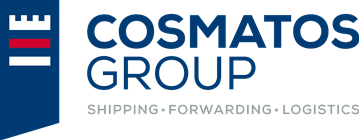Center of Gravity (COG):
The proper determination of the center of gravity of the cargo is of great importance in terms of avoiding cargo handling difficulties and possible tilt/shift that could result to cargo damage and possible personal injuries. When shipping wooden crates, it is always preferable to mark the center of gravity on the exterior of the crates.
Dunnage:
The weight of the cargo must be evenly distributed taking always into consideration the maximum weight tolerance of the container or the tank top strength of the vessel without neglecting the unique cargo attributes. Dunnage and wooden blocks must be made of hardwood and be free of defects and insects.
Lashing:
Lashing of the cargo must be carried out according to: IMO CCS code securing arrangement for non-standardized cargo. Lashing materials (wires, chains, tensioners etc.) must be of an approved age and of suitable size and weight capacity. The combined breaking strength of the lashing must be determined by a professional, but as a general rule, it must be at least two times the weight of cargo to be secured. Lashing equipment should not to be secured to any other point on the container or hold position other than those designated for this purpose (“eye rings”).
Lashing Certificate:
The stuffing and/or loading on board operation is always strongly recommended to take place under the supervision of a competent certified marine cargo surveyor who will eventually provide a lashing certificate as well. Carriers and ship owners, in general, require this certificate before loading the containers on board or, in the case of breakbulk vessels, before sailing from the port.
The proper determination of the center of gravity of the cargo is of great importance in terms of avoiding cargo handling difficulties and possible tilt/shift that could result to cargo damage and possible personal injuries. When shipping wooden crates, it is always preferable to mark the center of gravity on the exterior of the crates.
Dunnage:
The weight of the cargo must be evenly distributed taking always into consideration the maximum weight tolerance of the container or the tank top strength of the vessel without neglecting the unique cargo attributes. Dunnage and wooden blocks must be made of hardwood and be free of defects and insects.
Lashing:
Lashing of the cargo must be carried out according to: IMO CCS code securing arrangement for non-standardized cargo. Lashing materials (wires, chains, tensioners etc.) must be of an approved age and of suitable size and weight capacity. The combined breaking strength of the lashing must be determined by a professional, but as a general rule, it must be at least two times the weight of cargo to be secured. Lashing equipment should not to be secured to any other point on the container or hold position other than those designated for this purpose (“eye rings”).
Lashing Certificate:
The stuffing and/or loading on board operation is always strongly recommended to take place under the supervision of a competent certified marine cargo surveyor who will eventually provide a lashing certificate as well. Carriers and ship owners, in general, require this certificate before loading the containers on board or, in the case of breakbulk vessels, before sailing from the port.




